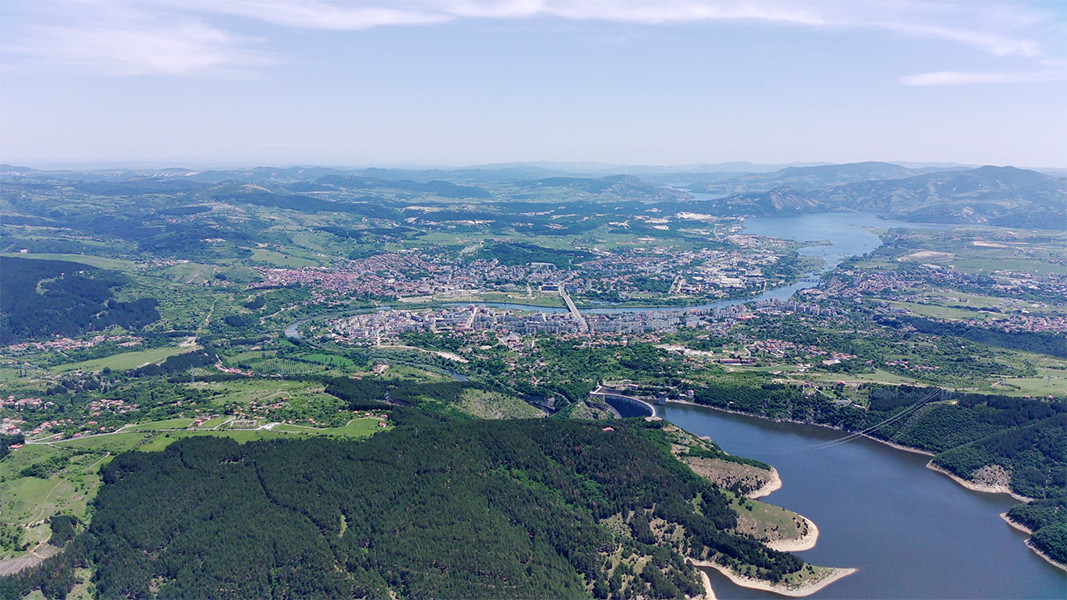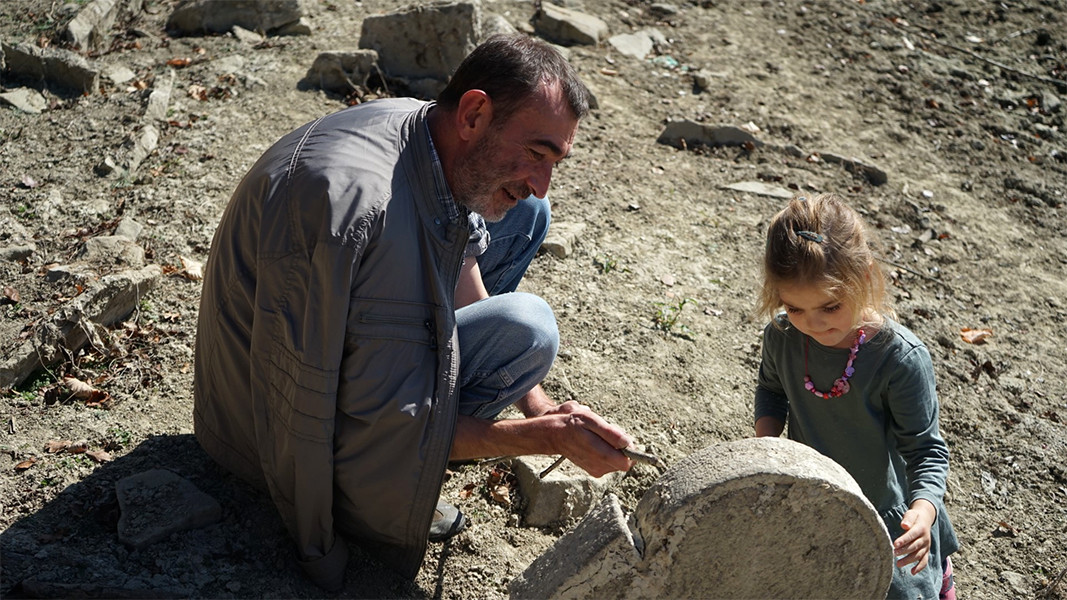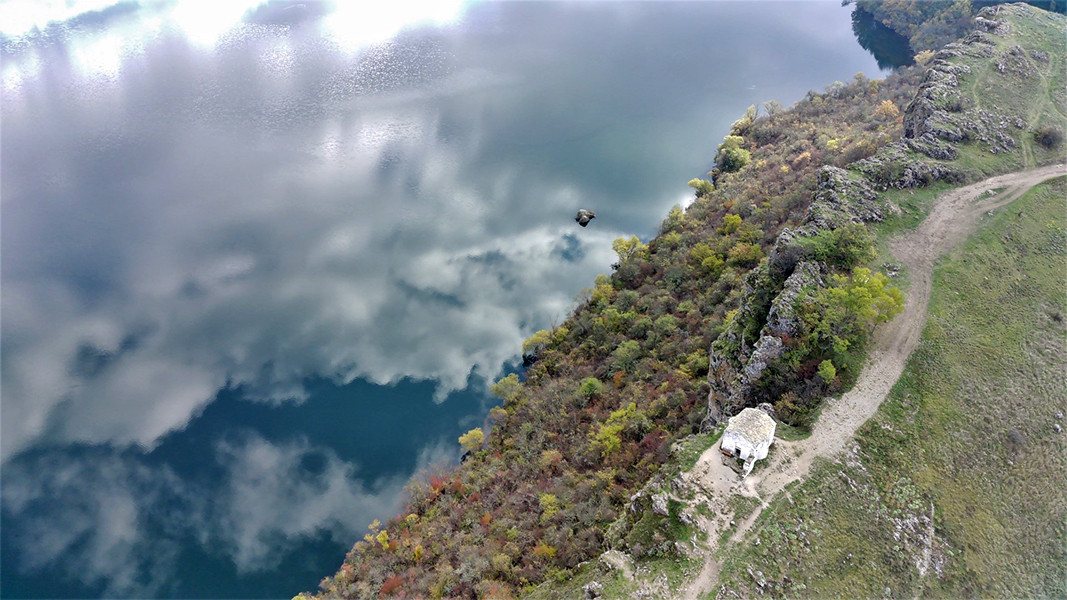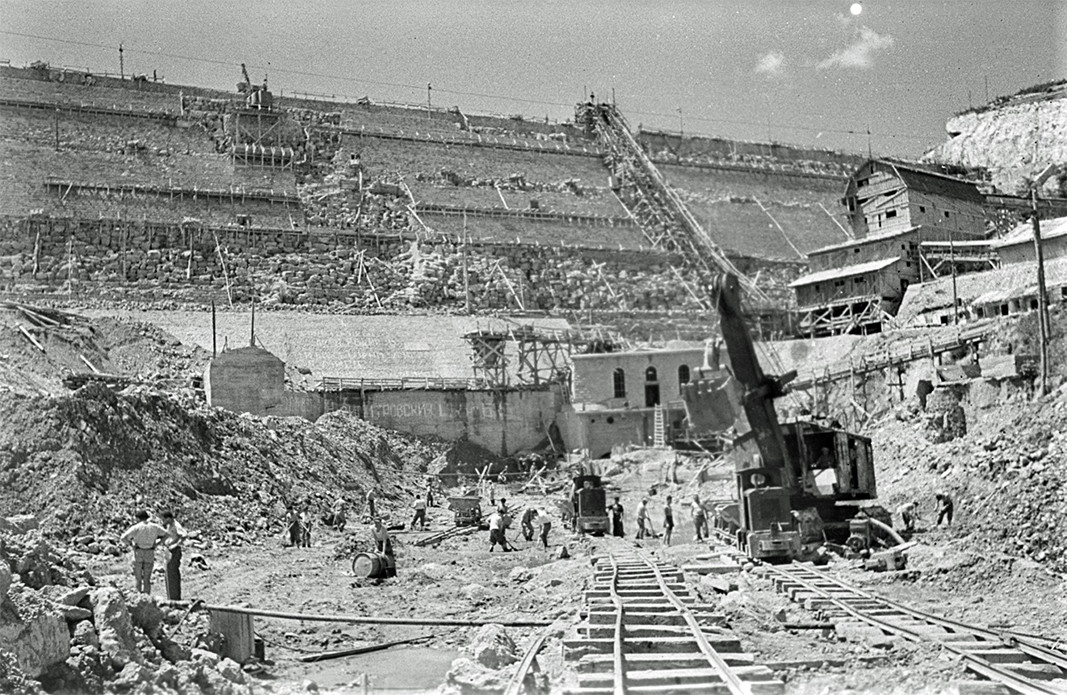Many photographs, including those taken from a bird's eye view, of depopulated villages, which served as the terrain for the construction of some of the water reservoirs in Bulgaria, are presented in the "Submerged Heritage" exhibition. It has been prepared by ethnologists and opens on August 1 and will remain on display until the end of September in the lobby of the Institute of Ethnology and Folklore Studies with a museum at the Bulgarian Academy of Sciences.
The exhibition is the result of a 4-year project by scientists from various fields - ethnography, folklore studies, including a geographer. The on-site team researched the remains of the obliterated villages, as well as the memories and stories of the people who had to move away from these places. It is a large-scale research project that covers more than 70 settlements remaining within the borders of more than 20 water reservoirs and this means meetings with hundreds of people scattered in different parts of Bulgaria.

"Among the photos included in the exhibition, details of the construction of the dams themselves are shown, photos from the fund of Archives State Agency”, explains Assoc. Prof. Lina Gergova, one of the researchers of Bulgaria's “Submerged Heritage'', and adds:
"Submerged" is more metaphorically speaking, because of course we haven't been diving in wetsuits to look for this legacy. Rather, we have tried to excavate from people's memories their personal family histories, the memory of villages submerged under the waters of some dam. Very often the public buildings in such villages remain intact. From there, legends were born about treasures hidden in them, about man-eating catfish that inhabit them. Fishermen usually tell such very interesting stories. Most dams are among the largest hydro-engineering projects in Bulgaria. Layers of soil are constantly deposited in them and the bottom changes a lot, so it is unthinkable that this "submerged heritage" would remain preserved and conserved under water. And the photos that can be seen in the exhibition of old cemeteries floating in places actually show the most preserved material remains of the former villages. They are the only surviving reminders there was once life there, and this also shows the different processes in clearing the future bottom of a dam, so that in some places the cemeteries were moved, but at other times they were kept in place without being moved. Such tombstones surface near the water reservoirs of Kardzhali, Yovkovtsi, Ogosta, Zhrebchevo, etc.”

The main credit for the preservation to this day of these scarce material remains of the settlements below the dams belongs to the communities themselves. This applies to the churches and to the few cult places left there, as there were around many of the villages, ethnologists state. However, there are also some finds that researchers come across when photographing coastal forests from the air or on the banks where access is prohibited because many of these dams are used for drinking purposes. They are also shown in the exhibition, and the feeling of working on the "Submerged Heritage" is a bit like being an Indiana Jones of a sort - "there is a discovery, and we ethnologists have become archaeologists", says Dr. Lina Gergova:
"The other thing that impressed us as a team is the great distances and the big decisions that these small and yet traditional rural communities made - to settle in some very faraway place, for example from the Iskar dam, from the village of Kalkovo, they moved to the towns of Sungurlare, Targovishte. Others have replaced rural life in the village of Zhilovtsi, below the Ogosta dam, or Krapets, near Vitosha and the Studena dam, with urban life in the factories, in the mines of Pernik, Montana, Berkovitsa.

This is also reflected in about 20 panels in the exhibition. Here visitors can see elements of the process of building a dam - compensating people, moving, demolishing houses. The construction of their new houses, very often typical and forming the same neighborhoods as in the place from which the settlers come. Then their return in search of remains of the village and gathering of the descendants, in an attempt to preserve at least the memory of the destroyed village. We have prepared several showcases in which we show the few surviving objects from the village of Eleshnitsa, which remained on the shore, but was depopulated and destroyed during the construction of the Piasachnik dam (Plovdiv region) and from the village of Zhrebchevo (Central Bulgaria), which gave the name of the dam built there.”
In fact, the theme of the "Submerged Heritage" exhibition does not end in the lobby of the Ethnographic Museum in Sofia. In the autum, the exhibition will awaken many memories and reflections during its visit to the people who were displaced from the submerged villages of Bulgaria. And for the scientists from the Bulgarian Academy of Sciences, the end of this project is also a starting point for the next one - about the fate of the modern depopulated villages, which is similar to the submerged ones, but following completely different commands of time.

Read also:
Trapezitsa is one of the three hills for which the old Bulgarian capital, Tarnovgrad (the medieval name of today’s Veliko Tarnovo), is famous . Located to the northwest of the town, it stands across from the neighboring hill Tsarevets – the..
On the feast of the Dormition of Saint Ivan Rilski, the Bulgarian Patriarch and Metropolitan of Sofia Daniil led the Divine Liturgy at the Rila Monastery. On the eve of the feast, he bowed before the relics of the patron saint of the Bulgarian people..
Today, August 18, the Bulgarian Orthodox Church marks the Dormition of St. John of Rila – the heavenly patron of Bulgaria. He is the most beloved saint in Bulgaria and is revered even beyond the borders of this country. We associate..
In 1018, after half a century of struggle, the First Bulgarian Empire was conquered by Byzantium. Despite the many uprisings of the..

+359 2 9336 661
